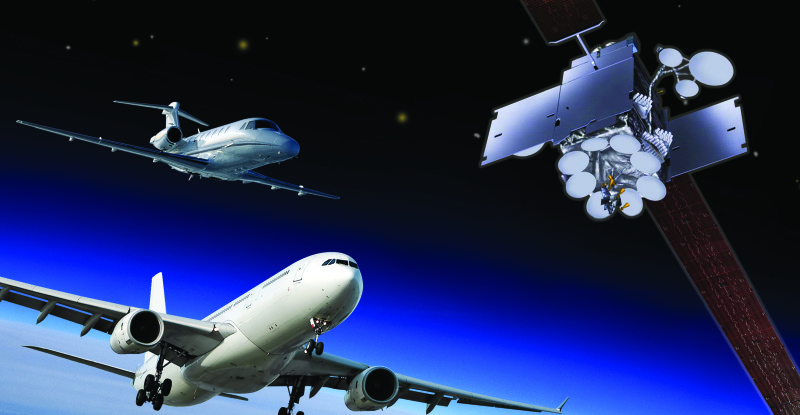Inflight connectivity providers have often bemoaned their inability to keep up with the ever growing demand for bandwidth in the skies. Terrestrial systems are limited by spectrum licensing while satellite services need more, newer satellites to offer up that additional throughput. And while there has been a surge in satellite launches in recent years, one provider seems to see their portion of the market shrinking.
ILS, the US company behind commercial launches of the Proton-M rockets in Kazakhstan, is cutting its staffing by 25% in anticipation of halving its annual launch rate to 3-4 starting in 2016 from the current 7-8. The decision comes after the May failure of the Proton-M rocket resulted in another grounding of the launch vehicle.
As a consequence, the launch of certain next generation high-throughput satellites have also been delayed. Inmarsat, for instance, had hoped to launch two more Boeing-built Ka-band satellites before the end of this year to complete its Global Xpress network. However the company confirms to RGN that it now expects to launch its second GX satellite on a Proton rocket by early next year, once the vehicle has been cleared to fly.
And then there’s the part where the overall success rate for ILS’ competitors appears to be rather better. The Proton-M failures were not ILS-managed launches (they were managed by the Russian government) but seeing the rockets explode rather than reach orbit is unsettling for satellite operators.
It should be noted that ILS is not the only company in this space seeing a workforce reduction. SpaceX recently laid off as many as 5% of its staff, a move it claims was based on inadequate performance, not business troubles. Though an experimental SpaceX rocket failed recently, the company – increasingly the darling of the industry – succeeded in launching an AsiaSat satellite into orbit on 7 September with its Falcon 9 rocket. The event was described in glowing terms by CBS.
Meanwhile, an SES-9 Ku-band satellite that will support inflight connectivity over Asia is scheduled to be lifted into orbit in 2015 by a SpaceX Falcon 9 rocket – the second SpaceX launch for SES.
Inmarsat competitor, ViaSat, recently told RGN that it doesn’t see satellite launch vehicle problems as impacting the 2016 launch of ViaSat-2, which will support Ka-band-based inflight connectivity over the Atlantic. ViaSat used ILS to launch ViaSat-1, the satellite that powers its Exede Ka connectivity service on JetBlue and United narrowbodies; it has yet to disclose its launch partner for ViaSat-2. Company director Don Buchman warns that there “seems to be less capacity for launches, which could adversely affect the whole industry”.
Less capacity to launch means the timeline for equipping the world airline fleet with inflight connectivity is creeping to the right. This, in turn, could impact the passenger experience at a time when passengers increasingly expect to be able to connect. A recent Honeywell study found that one in five (17%) passengers have switched from their preferred airline for another with better Wi-Fi offerings. And three in ten (30%) passengers think they could benefit faster from using an inflight Wi-Fi reward program rather than a specific frequent flier program.
Broadly describing the difficulties of keeping pace with passengers’ appetite for bandwidth, Gogo CEO Michael Small says, “The biggest challenge for Gogo, and really the industry as a whole, is keeping up with the insatiable demand for bandwidth. It’s true for mobile providers on the ground and it’s an even bigger issue in the air. Today, consumers expect to be connected at all times, no matter where they may be geographically, and they expect to be able to do everything they can do at their offices or in their homes.”









